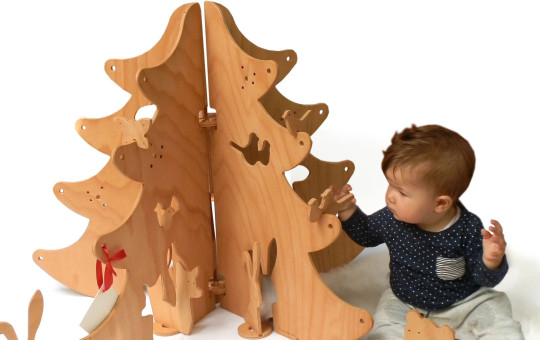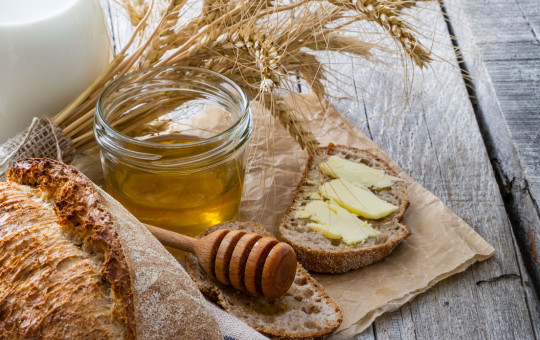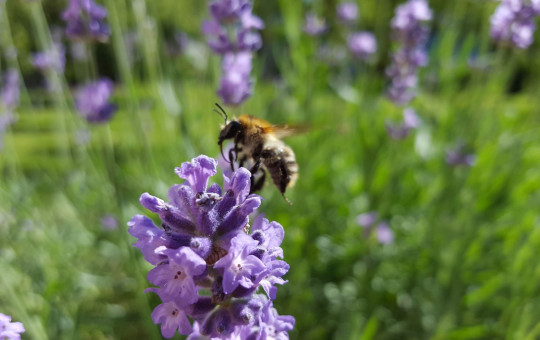This year, Slovenia is celebrating three beekeeping anniversaries: 150 years of organised beekeeping in Slovenia, the 250th anniversary of the death of Anton Janša, the founder of modern beekeeping, the 20th anniversary of Apimondia Ljubljana and the launch of the Anton Janša Beekeeping School.
Slovenia is the country with the highest number of beekeepers per capita in the world and the home of Carniolan honeybee, which is distinguished by its exceptional qualities, such as industriousness, longevity and tranquillity. Because of our love for bees and nature and of our awareness that without bees there would be no life on earth, it is not surprising that Slovenia itself spearheaded the initiative to celebrate 20 May as World Bee Day.
On the occasion of the anniversary, Slovenian beekeepers would like to see the European Union adopt their initiative for a uniform labelling of honey across Europe with an accurate indication of the country of origin, the creation of a European Beekeepers' Association to represent European beekeeping in Brussels, and Slovenian state recognition of the importance of bee pollination and the provision of financial compensation to beekeepers as a result.
Beekeeping is a way of life in Slovenia
In 1873, a group of beekeepers gathered in Ljubljana and, following the example of the Moravian beekeepers, founded the bilingual Carniolan Association for Prudent Beekeeping. The first President of the Association was Baron Emil Ravenegg Rotschutz. The association began publishing a gazette entitled Slovenska čebela (The Slovenian Bee) and its German counterpart Die Krainer Biene (The Carniolan Bee). Both monthlies were edited by Jožef Jerič (1823-1888), a priest from Dobovec near Trbovlje.
-

The Museum of Apiculture, which is located in the Radovljica Manor, exhibits the biology of the Carniolan grey bee. Photo: Jošt Gantar/www.slovenia.info
-

Slovenia is now home to the grey bee breed, the Carniolan honeybee (Apis mellifera carnica). Around 40,000 are sold each year, mostly to Central and Western Europe, but also across the Atlantic to South and North America. Photo: Jošt Gantar/ www.slovenia.info
In 1875, the name of the association was changed to the Slovenian Association for Prudent Beekeeping, and Jožef Jerič, the former Vice-President, became President. The number of members was around 200, but only half paid their dues regularly.
The Slovenska čebela gazette was published until the end of 1882, sometimes on a mere few pages and with long delays in between issues, and the Association was quietly dissolved a few years later.
On the initiative of Janez Modic (1846-1889), in 1883 the beekeepers and fruit growers of the Gorenjska region gathered in Lesce and founded the Beekeeping and Fruit Growing Association for Carniola with headquarters in Jesenice. The Association helped its members to sell and buy bees, honey, wax and fruit at a reasonable price, provided beekeeping advice and supplied beekeepers with hives and fruit plants at a discounted price. The following year, it organised a beekeeping and fruit-growing exhibition in Lesce and linked it to the celebration of the 150th anniversary of the birth of the master beekeeper Anton Janša and the unveiling of a commemorative plaque at his birthplace in Breznica.
Throughout its existence (until July 1889), the Association published a newsletter, the monthly Slovenski čebelar sadjerejec (Slovenian Beekeeper Fruit Grower). It was edited by Franjo Jeglič (1856-1935), a teacher in Dovje. After a few years, the official promotion of beekeeping was again taken over by the Agricultural Society in Ljubljana. Thanks to its director, Gustav Pirc, it was more effective than the previously failed associations.
The founding meeting of the Slovenian Central Beekeeping Association for Carniola, Styria, Carinthia and the Littoral, with its headquarters in Ljubljana, was held on 24 January 1898 in the office of the Agricultural Society.
The Association immediately started publishing its own newsletter, Slovenski čebelar (Slovenian Beekeeper), which is still published today. Its editorship was assumed by Frančišek Rojina (1867-1944), a teacher in Šmartno pod Šmarno goro, who did this job for 21 years.
It is interesting to note that the Slovenian Beekeepers' Association published only three professional works in the first half of its existence, namely translations of both of Janša's books, a book on Anton Janša written by Professor Stane Mihelič in 1934 and Jug's book Praktični čebelar (The Practical Beekeeper) in 1935.
In 1935, the Association bought a ground-floor house on Slovenska cesta (then Tyrševa Street) and set up its offices and a shop for beekeeping supplies (the apiary). The purchase was made possible by the money accumulated since 1921 in the Fund of Stones for the Beekeepers' Home through voluntary contributions, and partly also by loans.
Anton Janša
This year also marks the 250th anniversary of the death of the Slovenian-born beekeeping teacher Anton Janša. He trained as a painter in Vienna, but it was bees that became his love. After authoring several books, he became the first teacher at the beekeeping school in Vienna, founded by Empress Maria Theresa.
He also invented several beekeeping methods that are still in use today.
Apimondia
Once again this year, Cankarjev dom cultural and congress centre hosted the International Beekeepers' Congress, where scientists and experts in the field of beekeeping exchanged their experiences and knowledge.
Urban beekeeping
Cities are also becoming homes for Slovenian bees. In Ljubljana, Franc Petrovčič is considered to be the pioneer of urban beekeeping: since 2010, he has been beekeeping at Cankarjev dom and in the BTC City shopping centre. Hives can be found also on some other roofs in the city. Although beekeeping in Slovenia is still traditionally linked to the countryside, modern developments show that the whole of Slovenia is closely associated with beekeeping.
Date: 26. October 2023
Time to read: 2 min








